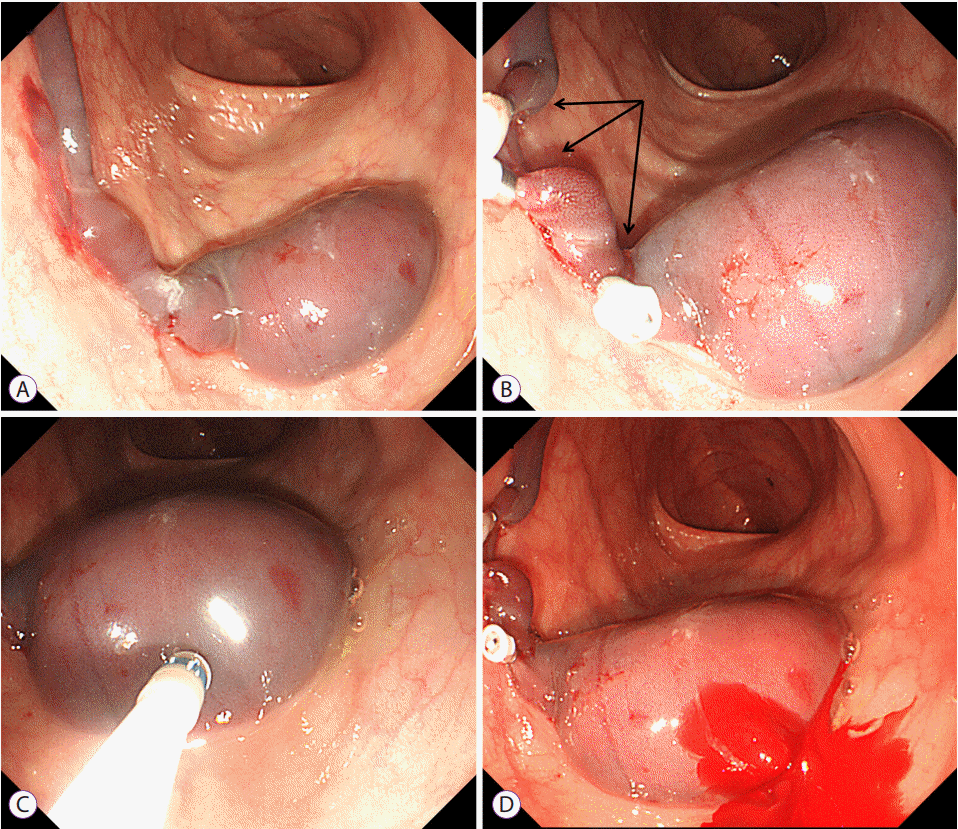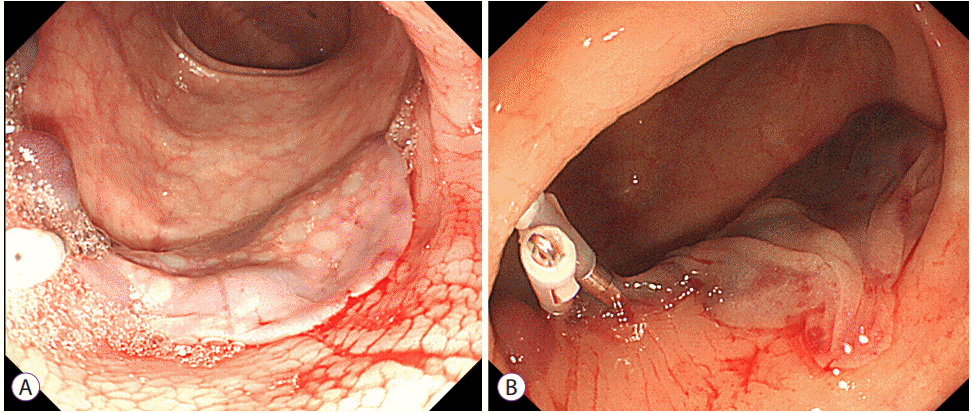An intramural hematoma of the gastrointestinal tract could be precipitated by an endoscopic examination, especially in patients being administered anticoagulation therapy or those with concomitant hematological diseases [1]. Although an intramural hematoma can be primarily associated with a biopsy or therapeutic procedure, occurrence of a spontaneous intramural hematoma during a diagnostic colonoscopy has been reported in a few cases [2-4]. Intramural hematomas are known to cause partial or complete bowel obstruction [5], and surgical treatment should be considered in patients with evidence of intestinal necrosis, peritonitis, or a deteriorating general condition despite conservative management [6,7]. Early detection and treatment of a hematoma, can prevent bowel obstruction and obviate the need for surgery. Our report describes early endoscopic management of an intramural hematoma, which occurred during a diagnostic colonoscopy.
A 78-year-old man underwent colonoscopy during scheduled follow-up for the management of ulcerative colitis. He had not received anticoagulation therapy, and laboratory tests revealed a normal platelet count and coagulation profile. During colonoscopic examination, a large elongated intramural hematoma with a normal mucosa was seen to develop in the sigmoid colon (Fig. 1A). We concluded the intramural hematoma might have occurred as a consequence of a continuous suctioning process employed during the procedure due to poor bowel preparation. Even after 10 minutes of observation, we found that the hematoma continued to grow in size due to active submucosal bleeding. We placed three endoscopic clips (HX-610-090L; Olympus, Tokyo, Japan) at the suspected sites of active bleeding (Fig. 1B, arrows), which led to cessation of growth of the hematoma. To determine reliably, a Dual knife (Olympus, Tokyo, Japan) was applied to excise the hematoma at its center and thereby evacuate it (Fig. 1C). An electrosurgical unit (VIO 300D; ERBE Elektromedizin, Tübingen, Germany) with an Endocut I setting (effect 3, duration 3, interval 3) was used as a power source. After excision, we noted immediate active bleeding (Fig. 1D) followed by flattening of the hematoma without secondary bleeding (Fig. 2A). Follow-up examination after 3 hours of observation showed no re-growth of the hematoma, and no further bleeding was documented (Fig. 2B). The patient was discharged without admission or need for further treatment.




 PDF
PDF Citation
Citation Print
Print




 XML Download
XML Download